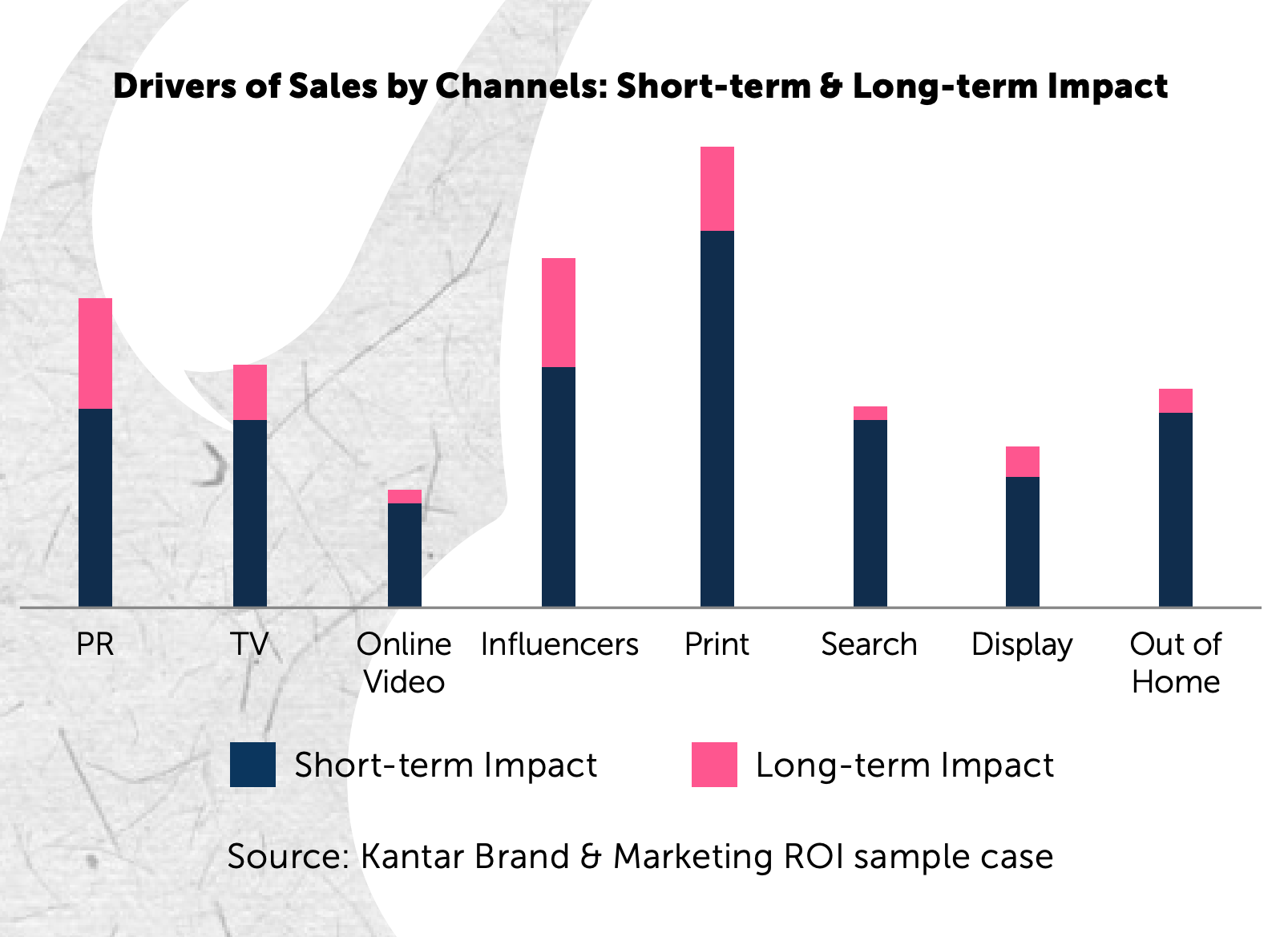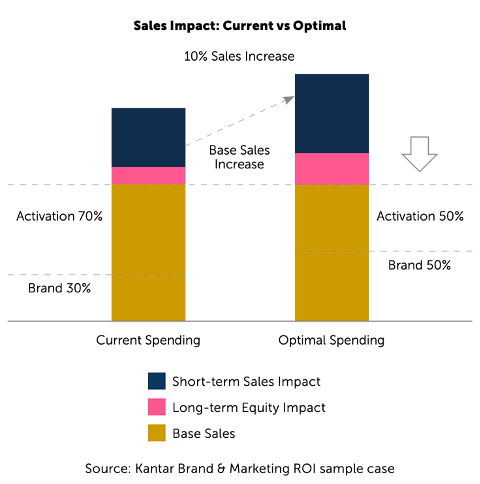
Balancing act: driving sales today and generating demand tomorrow
Balancing the short-term benefits of performance marketing with the long-term work of brand building is how sustainable and profitable brands grow
Year after year, BrandZTM Top Brands valuations demonstrate that strong brands generate superior shareholder returns, are less susceptible to economic downturn and recover faster from any recessionary impact. And according to Kantar’s 2020 Getting Media Right study, more than 90% of advertisers recognise the importance of balancing short- and long-term strategies.
However, only half of marketers are confident they have the right balance today, and agencies and media companies are no different. Pressure to deliver quarterly results continues to create a fallacy of growth in the near-term but this often comes at the expense of building long-term brand profitability. It puts pressure on brands to appeal to a pool of existing buyers with promotional tactics while missing the opportunity to unlock true growth potential.
Understanding short-term vs. long-term
There are two ways to sell things. The quick way is to send out marketing activity that evokes an immediate response – in other words, what’s known as trade activation. Trade activation doesn’t require building up long-term memories or doing much to change people’s minds. Instead, it’s about evoking a response – and that can be a highly profitable and efficient thing to do.
If we want longer-term growth, however, we need to change people’s minds. We need to build up memory structures that will influence their behaviour in the future. That’s a much harder task because it involves thinking about what people’s behaviour is likely to be in the next week, month or year.

Brand building is about securing future sales, revenue and profit. Activation, on the other hand, is focused solely on immediate response, ideally resulting in a sale, but potentially nothing more.
How to balance these opposing strategies
We have observed that the marketing levers that build brand equity and produce sustainable long-term effects are generally different from those that drive short-term effects. Although some long-term marketing efforts produce short-term effects, the reverse is not true. It should be noted that an accumulation of short-term effects does not translate into higher, long-term brand affinity and profitable growth potential. Therefore, it is critical to understand how the long-term efforts of advertising work and how they can perform in tandem with nearer-term efforts.
Smart marketers build their brands with a durable strategy in mind and activate this strategy efficiently. Building a brand over a long period of time means building up a preference for the brand – then activations converts that preference efficiently into profit. We need to balance both jobs so that they enhance each other.
This balancing act requires marketing leaders to address ROI measurement and the allocation of budgets in a more holistic manner. Understanding how various channels can generate short- and long-term sales growth is a necessary first step to deploying the right mix of brand building and performance efforts. It also enables marketers to demonstrate this delicate balance to financial teams and executive leadership, and ultimately be more successful in allocating their budget to enable growth. This requires a Total Marketing ROI approach to optimisation.

We need to continue to deliver fact-based marketing but also to give just as much weight to both long- and short-term decisions. It’s important to then ask yourself – do you have the right data and right prediction models to do this?
Read more from BrandZ’s Top 50 Most Valuable Japanese Brands 2021 report
published on
14 December 2020
Category
More in Commerce

Media in India: the future is now
Brands pursuing the Indian market must focus on personalised experiences and data-driven strategies

Multinational companies must have an India strategy
The Indian market is hugely attractive to brands, but multinational companies must have a bespoke India strategy

Where there’s women’s health, there’s wealth
There’s huge economic advantage in closing the women’s health gap, and yet still this gap is still formidable

